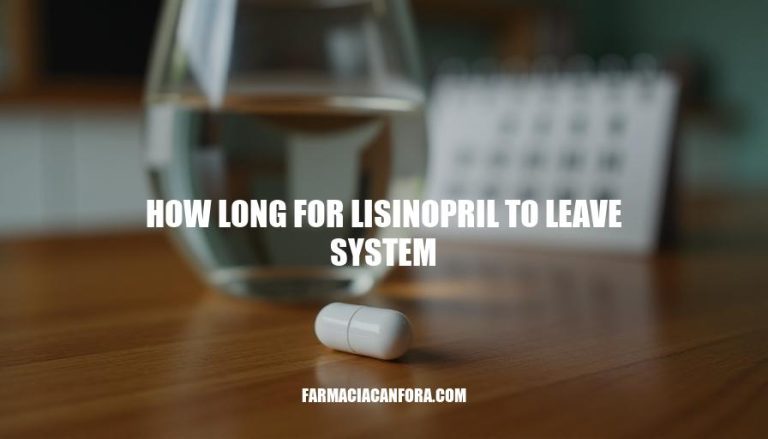


Lisinopril is an ACE inhibitor used primarily to treat high blood pressure, heart failure, and to improve survival after heart attacks. Knowing how long it stays in the system helps in managing dosing schedules, understanding potential side effects, and ensuring safe switching to or from other medications. This information is crucial for patients and healthcare providers to avoid complications and optimize therapeutic outcomes.
Dosage and frequency of use directly impact how long lisinopril stays in the system. Higher doses and more frequent administration can lead to longer retention times. Age influences the body’s metabolism and excretion processes, with older adults potentially experiencing longer durations.
Kidney function is crucial since lisinopril is primarily excreted through the kidneys; impaired kidney function can prolong its presence. Overall health, including the presence of other medical conditions and medications, can also affect how long lisinopril remains in the system.
Lisinopril has a plasma half-life of approximately 12 to 13 hours. However, the elimination half-life is significantly longer, around 30 hours. This means that it takes about 12 hours for the concentration of lisinopril in the blood to reduce by half, and approximately 30 hours for the drug to be eliminated from the body by half.
The clearance of lisinopril is primarily renal, with a mean renal clearance of 121 mL/min in healthy adult males.
In a 30 kg child, the typical clearance is 10 L/h, which increases with renal function. The time to peak concentration is about 7 hours in adults.
Lisinopril is detected in the body using various methods, primarily through blood and urine tests.
Blood tests can measure the concentration of lisinopril in the bloodstream. These tests are useful for monitoring therapeutic levels and ensuring that the drug is within the therapeutic range. Lisinopril can be detected in blood for up to three days after the last dose.
Urine tests are another common method for detecting lisinopril.
These tests can determine whether the drug has been taken recently. Lisinopril can be detected in urine for up to three days after the last dose.
Both methods are effective for monitoring compliance with prescribed medication regimens and ensuring proper dosing.
Lisinopril has a half-life of approximately 12 hours, meaning it takes about 12 hours for the concentration of the drug in the body to be reduced by half. This clearance time has practical implications for patients, especially when discontinuing the medication.
During the withdrawal period, patients may experience a range of side effects due to the sudden absence of the drug. These side effects can include:
Rebound hypertension: A sudden increase in blood pressure, which can be dangerous.
Nervousness and agitation: Patients may feel unusually anxious or agitated.
Headaches: Abrupt discontinuation can lead to headaches.
Palpitations: An increased heart rate or irregular heartbeat.
Sweating and facial flushing: These symptoms can be uncomfortable and distressing.
Nausea and vomiting: Gastrointestinal disturbances may occur.
Tremors and insomnia: Patients might experience shaking and difficulty sleeping.
It’s crucial for patients to consult their healthcare provider before stopping lisinopril to avoid these withdrawal symptoms and ensure a safe transition off the medication.
Lisinopril, an ACE inhibitor, is used to treat high blood pressure, heart failure, and improve survival after heart attacks. Its duration in the system depends on dosage, frequency of use, age, kidney function, and overall health.
The plasma half-life is approximately 12-13 hours, while the elimination half-life is around 30 hours. Lisinopril can be detected in blood for up to three days and in urine for the same period.
Patients should consult their healthcare provider before stopping lisinopril to avoid withdrawal symptoms such as rebound hypertension, nervousness, headaches, palpitations, sweating, nausea, tremors, and insomnia.
It is essential to follow a personalized dosing schedule and monitor therapeutic levels to ensure safe and effective treatment.